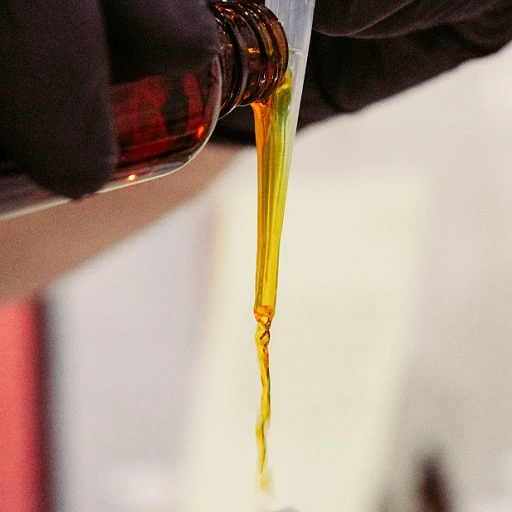The Historical Significance of Birch in Perfumery
The Time-Honored Role of Birch in Scent Creation
Birch has held a place of reverence in the world of perfumery, thanks to its unique properties and historical significance. For centuries, birch, especially the variety known as Betula lenta or sweet birch, has been utilized not just for its olfactory allure but also for the diverse benefits it offers in various natural products. From the bark of this mighty tree comes birch tar, a component that has long been prized in crafting therapeutic grade essential oils.
The journey of birch in fragrance can be traced back to a time when natural products were the only source for creating aromatic concoctions. The birch bark and its derivative oils, including birch oil and birch essential oil, have been cherished for their sweet, wintergreen aroma and skin soothing properties. This made them a staple in traditional perfumery and wellness practices.
In the form of birch tar oil, the essence extracted carried not only an enchanting scent but was also used for its medicinal qualities. This historical use tied nicely with the evolving perception of essential oils, where their therapeutic benefits began to take center stage, highlighting the free shipping to innovative modern use in perfumes today.
As the industry shifted, the birch began to be recognized for its versatile chemical composition, notably containing methyl salicylate, a precursor to certain analgesics, and prominently featured in Section 2. This intersection of medicinal and olfactory benefits further cemented birch's status in traditional and modern fragrance creation. Birch oil and other birch-derived compounds are a testament to the enduring appeal of nature's own aromatic wonders—a trend that continues to this day even as perfumery explores new ingredients, much like in
this exploration of lavender and peppermint oils.
Chemical Composition and Extraction of Birch Essence
Extracting the Essence: A Glimpse into Birch Chemistry
Birch, a source of fascination in the perfume world, relies on a meticulous extraction process to present its essence. Commonly sourced from the lush bark of Betula lenta or sweet birch, this essential oil embodies natural intricacies that perfumers cherish.
Birch essence undergoes a transformation before capturing hearts with its unique profile. This transformation involves deriving birch tar oil from the bark, a process requiring skill and precision to maintain the rich yet subtle sweet undertones.
### Chemical Complexity and Natural Benefits
A signature component in its chemistry is methyl salicylate, giving birch its wintergreen-like aroma. Known for its aromatic soothing capabilities, methyl salicylate showcases birch's therapeutic grade potential. Essential oils like those from birch sweet provide benefits not just in scent, but also in skincare, thanks to its naturally derived ingredients.
To craft products with birch's pleasant aroma, pure essential oils are extracted ensuring quality down to the last drop. The production usually involves distillation, creating a rich bark oil that seamlessly blends into fragrant compositions.
### Sustainable Origins and Quality Assurance
Ensuring sustainability remains a challenge in harnessing this exquisite oil. Sourcing birch must adhere to eco-friendly practices preserving its natural beauty and maintaining therapeutic grades for discerning noses. With free shipping often available, the access to this precious bark tar transcends borders, making birch essence a true global treasure.
When assessing birch's allure, it is vital to remember its complexity, rooted deeply in natural origins and beautifully reflected in every bottle of birch essential oils.
For further insights on fragrance extraction methods and sustainability practices, explore
this post.
The Scent Profile of Birch Essence
Sensory Experience of Birch Essence
The scent profile of birch essence evokes a captivating blend that resonates with both a historical and modern essence. Distinctly marked by a sweet, slightly balsamic aroma, birch essential oil often calls to mind the crispness of nature's own exhale. This isn't merely by chance—it's a sensory lineage tied to its components, chiefly the presence of methyl salicylate, commonly found in sweet birch and wintergreen. Its refreshing, mint-tinged notes enliven the senses, providing an aromatic experience that is both invigorating and grounding.
Birch tar oil, derived from the slow distillation of birch bark, presents an entirely different, yet intriguingly complementary, olfactory profile. Known for its smoky, leathery characteristics, it underscores the woodsy base of birch essence, offering a bold counterpoint to the sweetness of its counterpart. The richness of birch tar contributes to a fragrance profile that is not only earthy but also deeply aromatic, weaving its way into the heartnotes of many a perfume.
In contemporary perfumery, birch essence brings a layered depth, often utilized for its ability to meld beautifully with other natural products such as sandalwood, creating a harmonious blend that appeals to both traditionalists and modernists alike. For further exploration of such aromatic harmonies, you might be interested in the modern perfumery allure linked seamlessly with birch's raw and undisturbed appeal.
Birch Essence in Modern Fragrance Creation
Innovative Uses of Birch Essence in New Fragrance Designs
Birch essence has undoubtedly made its mark in the world of modern perfumery. This all-natural element, derived from the sweet and pristine birch bark, has become the centerpiece of various aromatic compositions. The key lies in its versatile nature, which harmoniously blends with other fragrant compounds, bringing life and depth to contemporary scent creations.
The distinctive scent profile of birch, enriched by its primary constituents like betula lenta and methyl salicylate, offers a neat blend of sweet, balsamic tones accompanied by subtle hints of wintergreen. Such attributes are highly coveted by perfumers seeking to craft captivating olfactory narratives. Birch oil introduces a layered complexity to fragrances, often used as both a heart and base note—highlighting its adaptability across various olfactory families, from fresh and woody to the more robust leather and smokey tones.
One of the more intriguing incorporations of birch essence is in products that strive to achieve a natural, organic identity. Thanks to birch oil's therapeutic grade properties, it offers multiple benefits beyond scent. This has been particularly appealing to those prioritizing sustainable, skin-friendly offerings enriched with natural products.
Challenges do remain, however. The sourcing of pure essential birch oil, especially ensuring quality and sustainability, demands diligent verification of supply chains and careful consideration of environmental impacts, including mindful harvesting of birch bark and bark oil. In the quest for sustainable luxury, many brands are exploring biotechnological innovations that promise authenticity while addressing environmental concerns. Nonetheless, the lure of birch remains strong in fragrance creation, continually inspiring and evolving with new perfumery trends.
Challenges in Sourcing and Sustainability
Sourcing Challenges and Environmental Concerns
The integration of birch essences, such as birch tar and birch essential oil, in the world of perfumery brings various sourcing and sustainability challenges to the forefront. One significant issue is the environmental impact associated with the extraction and production of these essential oils. While birch bark and birch tar are highly sought after for their unique aromatic profiles, the increasing demand for these natural products places pressure on sustainable harvesting practices.
Birch essential oil, particularly from sweet birch and black birch species like Betula lenta, is a prized ingredient due to its sweet and captivating scent reminiscent of wintergreen. However, the delicate process of extracting pure essential oils requires a careful balance between yielding pure products and protecting natural resources. The essence is often distilled from the bark, which poses a risk if not sourced from sustainably managed forests.
In response to the growing demand and to ensure sustainable practices, some suppliers emphasize therapeutic grade production, which not only caters to the purity and quality of the oils but also aligns with ethical sourcing. The full cycle from sourcing to shipping must include diligent strategies to minimize environmental impact while preserving the essence's natural composition.
Moreover, the presence of compounds like methyl salicylate, common in birch oil, requires attention as they can pose health risks if not handled correctly. Thus, companies strive to offer products that are pure and free from synthetic additives or harmful chemicals.
Ensuring that birch-derived products are sourced ethically and packaged with environmental consciousness can pose logistical and financial hurdles, but the benefits of adhering to sustainable practices are invaluable. Carrier oils often assist in diluting concentrated extracts like birch tar oil, allowing consumers to enjoy the rich aromatic experience without compromising on skin safety or ecological balance.
As more perfume creators and enthusiasts become conscious of these considerations, there is a hopeful shift towards a more sustainable future for birch essence and essential oils in the fragrance industry.
The Future of Birch Essence in Perfumery
The Coming Age of Birch Essence in Scent Crafting
As we explore the potential trajectory of birch essence in perfumery, it's clear that its future hinges on a blend of tradition, innovation, and sustainability. The historical relevance of birch in fragrance, coupled with its unique scent profile, sets a foundation for its continued allure.
In modern fragrance creation, birch essence combines the past's charm with the present's demand for natural and therapeutic ingredients. Its components, such as methyl salicylate found in birch bark, offer sweet nuances reminiscent of wintergreen, lending an invigorating touch to various fragrance products. The versatility of birch as a core ingredient, whether as birch tar oil or sweet birch essential oil, ensures its continued presence in both niche and mainstream creations.
However, sourcing birch essence sustainably remains a significant challenge. The extraction process of birch oils and tar, typically derived from Betula lenta, must be balanced with ecological considerations, ensuring the bark and other natural resources are harvested ethically. With increasing consumer demand for transparency, brands need to prioritize sustainable practices that ensure birch-derived products are harvested responsibly, offering free shipping and eco-friendly options to conscious consumers.
Looking forward, the fragrance industry’s ability to innovate will be critical. Utilizing carrier oils to incorporate therapeutic-grade birch essence into eco-conscious product lines can address environmental concerns while appealing to the health-conscious market. As the industry embraces these changes, birch essence will likely be a staple, blending nostalgia with modern environmental responsibility.














